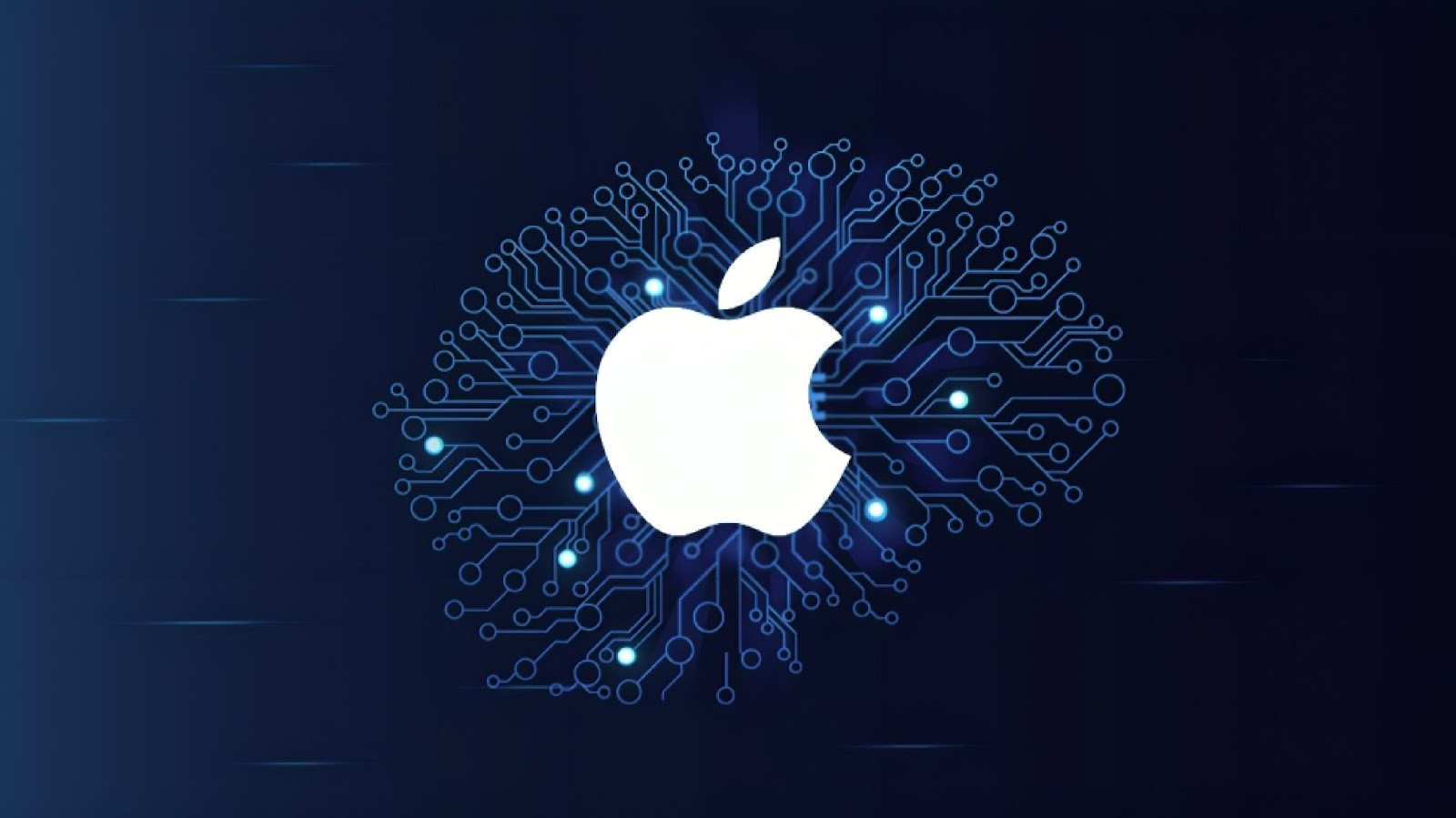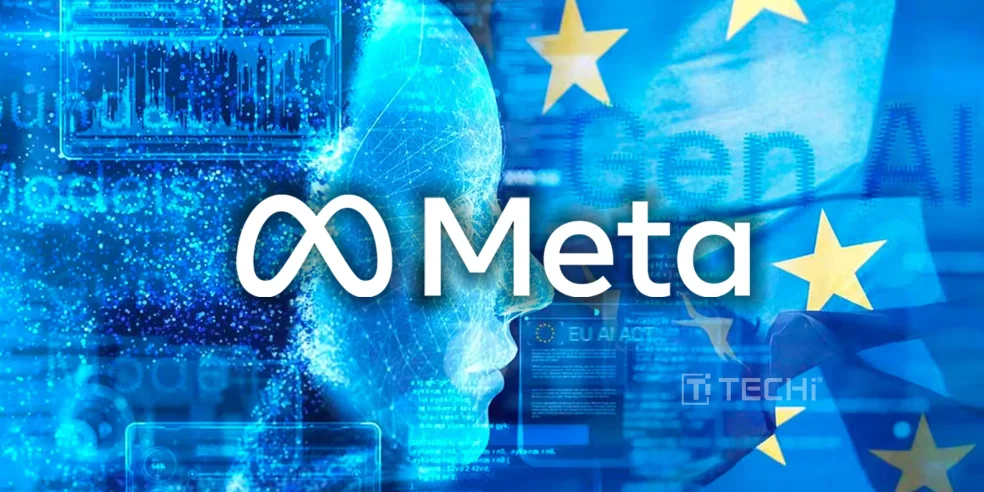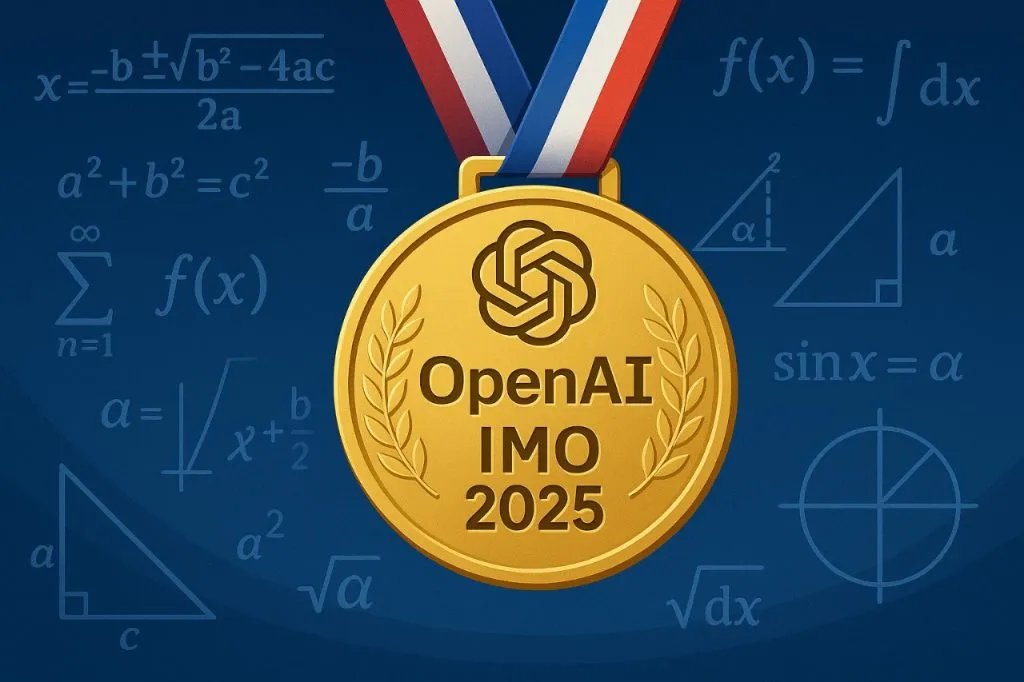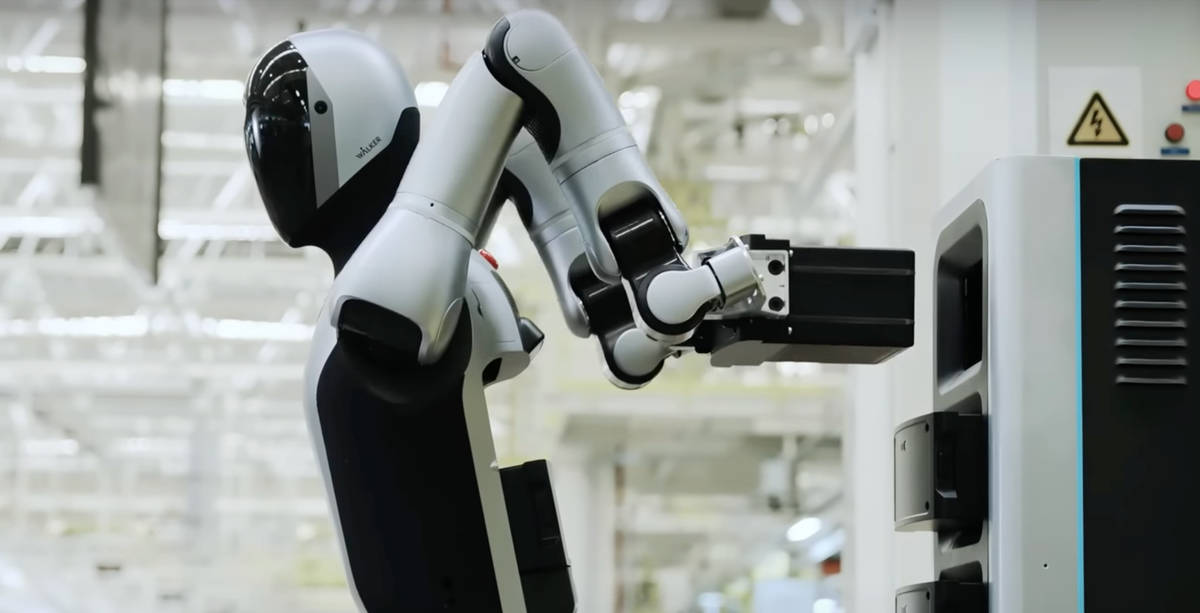Top AI News July 2025

Top AI News July 2025
3 July 2025 – Microsoft Restructures for AI
Microsoft lays off 9,000 employees to streamline operations and focus on AI and cloud. With record financial results, the company reduces bureaucracy and bets on engineers to accelerate innovation.
11 July 2025 – Apple Launches ReALM, AI That Understands Your Screen
Apple unveils ReALM, an AI model that interprets what’s on your screen in real time to offer contextual help. Designed for Siri, it promises a smart, native, and discreet experience without compromising user privacy.
18 July 2025 – Meta Rejects EU AI Code
Meta refuses to sign the EU’s voluntary AI code, citing legal uncertainties. While Microsoft and OpenAI cooperate, Meta criticizes proactive regulation. The decision deepens the tension between innovation and compliance in AI.
20 July 2025 – AI Wins Gold at Math Olympiad
AI models from OpenAI and DeepMind solve 5 of 6 problems at the IMO using only natural language. It proves AI is evolving from text generation to complex symbolic reasoning, unlocking new paths in education and research.
22 July 2025 – China Launches Humanoid Robot to autonomously change its battery
UBTech introduces Walker S2, the first humanoid robot to autonomously change its battery. Built for continuous work, it marks a leap in robotic autonomy. China accelerates its industrial automation ambitions.
3 July 2025. Microsoft Cuts 9,000 Jobs to Refocus on AI and Efficiency

Microsoft has announced another significant round of layoffs affecting about 9,000 employees, or around 4% of its global workforce, as it begins fiscal Q1 2026. While layoffs are never easy, this move signals a shift in strategy rather than a response to financial issues. With over $70 billion in quarterly revenue and nearly $26 billion in net profit, Microsoft remains in strong financial health. In fact, the company's stock recently hit a record high of $497.45.
This round of layoffs follows 6,000 job cuts in May and 300 in June, bringing the total for 2025 to nearly 15,000. However, leadership emphasizes that this isn’t just about reducing staff; it’s about creating leaner, more agile teams that can drive innovation in AI, cloud computing, and developer tools.
Rebalancing: More Builders, Fewer Managers
According to internal sources and executive communications, the company’s new focus is on technical agility. Microsoft plans to change the balance of builders and managers, putting more engineers in key roles while reducing layers of middle management. Products like Azure AI, GitHub Copilot, and partnerships with OpenAI are central to this change.
The goal is to speed up product delivery, reduce red tape, and concentrate on what leadership calls "innovation leverage"—teams that have a direct impact on Microsoft’s most profitable and promising sectors.
Gaming Division Impacted
The Xbox and gaming divisions were also affected. Several teams went through reorganization or job cuts, raising concerns about morale and continuity after an already challenging year. While Phil Spencer, head of Xbox, framed the layoffs as necessary for long-term growth, feedback on internal forums has been mixed, with rising anxiety among non-technical staff.
Why It Matters
The broader tech industry is experiencing a similar trend. Meta, Google, and Amazon have all reduced middle management to focus on engineering and AI delivery. What sets Microsoft apart is its strong financial backing—it’s not making these cuts out of weakness, but from a strategic viewpoint.
By removing internal obstacles and concentrating on AI, Microsoft aims to stay ahead in a fast-moving, competitive landscape. The strategy is clear: fewer layers and more focus on execution.
Looking Ahead
As Microsoft moves forward, eyes will be on whether these AI-focused, builder-heavy teams can create impactful products and keep top talent. If they succeed, this could shape the future for tech companies adapting to the demands of the AI era.
11 July 2025. Apple Introduces ReALM: The AI That Sees and Understands Your Screen

Apple has quietly revealed one of its most promising AI projects. Called ReALM (Reference Resolution as Language Modeling), this model aims to understand what’s displayed on your screen and act on it without you needing to explain anything.
Still in the research phase, ReALM could play a key role in Apple’s future AI services, especially within Siri. Its aim is to give Apple devices real-time context awareness, meaning understanding what you see and offering immediate help—whether you’re reading a text, browsing your calendar, or checking a flight.
Smarter, More Natural Help
Imagine reading a dinner invitation and asking Siri to add it to your calendar. With ReALM, Siri would already know the time and date—it’s right there on your screen. Or think about tapping a package tracking number and having Siri automatically pull up the status. That’s the level of intelligence Apple is aiming for.
ReALM stands out because it doesn’t rely on camera input or complex image processing. Instead, it reads your interface like structured text—buttons, menus, messages—to understand what you’re doing. It’s like giving Siri eyes that interpret the same language as your apps.
Behind the Scenes
While most AI systems try to interpret visuals like a human would, ReALM takes a different approach. It converts what’s on the screen into readable sequences, then reasons over them using language modeling. In early tests, Apple claims it performs better than GPT-4 and Gemini for tasks that involve understanding software interfaces.
Although ReALM isn’t yet part of iOS, the company is laying the groundwork for a more capable and proactive Siri. And because it adheres to Apple’s privacy principles, it doesn't need to send your screen data to the cloud to be effective.
Why This Is a Big Deal
Apple may have entered the generative AI race later than others, but it’s leveraging its strengths: tight integration with hardware, user experience, and privacy. Instead of chasing trendy chatbot features, it’s focusing on tools that enhance how people currently use their devices.
If ReALM makes it into consumer products, it could change our expectations for digital assistants. Not only reactive, but genuinely aware of what’s happening and ready to assist—without the awkward back-and-forth.
Looking Ahead
ReALM might be just a research project today, but it shows where Apple is headed. The vision is straightforward: AI that integrates into your workflow, anticipates your needs, and stays one step ahead—without getting in the way.
18 July 2025. Meta’s Refusal to Sign EU AI Code Raises Red Flags

Meta has chosen not to sign the European Union’s new voluntary Code of Practice on general-purpose AI, raising concerns about the industry's alignment with regulatory efforts. Released on 10 July 2025, the code is part of the EU’s phased rollout of the AI Act, which will take full effect in August.
Microsoft, OpenAI, and French AI startup Mistral have already signed the agreement, showing their willingness to comply with Europe’s standards for transparency and accountability. Meta, however, cited “legal uncertainties” and argued that the voluntary code adds obligations beyond what the AI Act requires.
A Deepening Regulatory Divide
Joel Kaplan, Meta’s head of global affairs, mentioned that companies like Airbus and Philips have called for a two-year delay in enforcing the AI Act, emphasizing the challenges of compliance. Meta’s position reflects a broader philosophical divide: the EU focuses on proactive governance, while Silicon Valley prefers a reactive, market-driven approach.
In contrast, the current U.S. administration leans toward deregulation, while China maintains centralized control. AI governance is becoming a fragmented landscape, making it difficult for global companies to navigate inconsistent policies across regions.
Why It Matters
Meta’s refusal raises important questions. First, can the EU effectively manage AI without full cooperation from major players? Second, does Europe risk driving innovation elsewhere by tightening compliance too soon?
It also highlights the delicate balance between protecting democratic values and fostering innovation. If trust and compliance diverge significantly, both sides may lose: regulators fail to enforce protections, and companies miss opportunities in tightly monitored markets.
Conclusion
The EU’s “voluntary now, enforce later” approach is being tested. Meta’s decision not only undermines the perceived unity of the industry but may also set a precedent for others to follow suit. For the EU, the challenge is to demonstrate that its model can maintain safety and competitiveness before that balance is disrupted.
20 July 2025. OpenAI’s Math Olympiad Win Signals New Era for AI Reasoning

In a historic achievement, AI models from OpenAI and Google DeepMind earned gold medals at the International Mathematical Olympiad (IMO), a traditional showcase for the world’s brightest high school students.
These models solved five out of six problems. This performance places them among the top human competitors. What makes this notable is how they achieved it: using natural language, step-by-step, without any code execution. The models reasoned symbolically and communicated solutions just like human students.
Breaking Through Symbolic Reasoning
This represents a shift in the capabilities of language models. Once thought strong in language but weak in logic, LLMs are now showing skills in abstract reasoning, algebra, and mathematical intuition—areas previously considered out of reach.
The implications are significant. In education, these models could serve as endless tutors. In research, they may assist in proofs, model building, and hypothesis testing. In industry, they mark the start of AI as a genuine tool for collaboration.
Redefining the Role of AI
This win forces a rethinking of how AI fits into academic and professional settings. Should AI compete? Should it be credited in published work? And how can we ensure access to this power is fair?
Why It Matters
The gold-medal performance is more than just a headline; it signals that LLMs are closing the gap between statistical modeling and cognitive reasoning. As these abilities develop, they’ll change not just how we approach problems, but who or what gets to solve them.
Conclusion
AI isn’t just drafting emails anymore; it’s tackling some of the world’s toughest challenges. This doesn’t replace human insight; instead, it’s a strong invitation to rethink how we collaborate with machines in discovery, learning, and creation.
22 July 2025. China Unveils 24/7 Humanoid Robot with Self-Charging Capability

UBTech, a leading Chinese robotics company, has launched the Walker S2, a humanoid robot that can change its own battery autonomously, allowing for continuous 24/7 operation. This is a major advancement in robotic independence and could transform labor in manufacturing and logistics.
Walker S2 stands 1.62 meters tall, weighs 43 kilograms, and operates using dual 48-volt lithium batteries. When its power is low, it walks to a docking station, removes the drained battery, installs a fresh one, and resumes its tasks without any human help.
Designed for Real Work, Not Just Demos
Unlike many concept robots, the Walker S2 builds on tested models already used in factories by BYD, NIO, and Volkswagen. UBTech aims to expand this generation for broader applications in public service, logistics, and high-precision manufacturing.
China’s Robotic Vision
China is making significant investments in humanoids, with over 1,600 robotics firms in Shenzhen alone. Robots are viewed as a solution to labor shortages, safety issues, and increasing industrial costs.
Earlier this year, humanoid robots even participated in a half-marathon in Beijing, showcasing new levels of mobility and endurance.
Challenges Ahead
While the technology is impressive, concerns remain: What will the cost be? Can these robots adapt to unpredictable environments? And what ethical guidelines exist as robots gain autonomy in human spaces?
Why It Matters
The Walker S2 could change how businesses approach labor, uptime, and automation. It’s a milestone that positions humanoids as more than novelties, but as potential co-workers.
Conclusion
Whether viewed as a breakthrough or a warning of job displacement, one thing is clear: robotics is entering a new stage. The machines are no longer waiting to be recharged; they are doing it themselves, and the global implications are significant.





